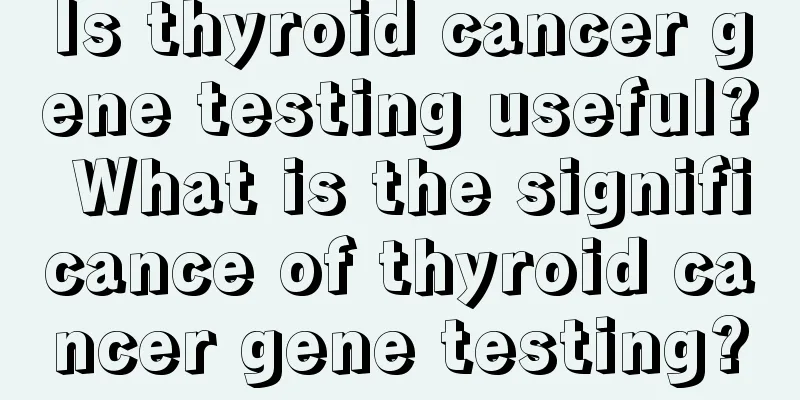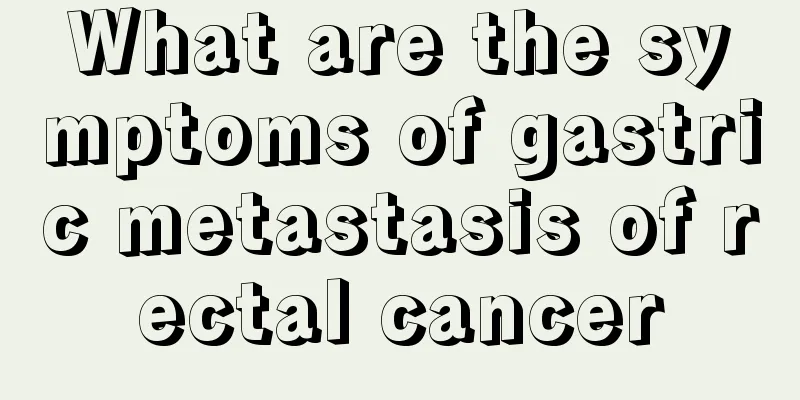Is thyroid cancer gene testing useful? What is the significance of thyroid cancer gene testing?

|
Is genetic testing for thyroid cancer useful? The harm caused by the emergence of thyroid cancer to patients and even the entire family cannot be expressed in words. Although current medical technology has made great progress and development, and cancer prevention measures have also become widely popular, there are still many people who suffer from the great torture of cancer. So, for a disease like thyroid cancer, is genetic testing useful? The preoperative diagnosis of thyroid cancer mainly relies on fine needle aspiration cytology (FNA), but some patients have difficulty in diagnosis through cytology. With the development of molecular detection technology, the detection of thyroid cancer-related genes can accurately distinguish between papillary thyroid cancer and follicular thyroid cancer for some puncture or surgical resection tissues that are difficult to diagnose, combining the test results of BRAF, RET/PTC and PAX8/PPAR genes. The significance of thyroid cancer gene testing is as follows: 1. BRAF gene mutation and RET/PTC have good specificity for papillary thyroid carcinoma. For papillary thyroid carcinoma, the overall BRAF mutation positive rate is about 45%. If the cytology test results are atypical or difficult to diagnose, but the BRAF mutation is positive, it can almost be diagnosed as papillary thyroid carcinoma. 2. For those with positive BRAF mutation, 90% are accompanied by V600E rearrangement, which is often associated with tumor progression such as thyroid tumor invasion, lymph node and distant metastasis. The latest studies have shown that such patients also have a relatively poor prognosis and poor response to iodine-131 treatment. This is mainly due to the BRAF mutation that prevents iodine-131 from entering tumor cells. In addition, it is encouraging that molecular targeted drugs such as vemurafenib, which target gene mutations such as BRAF, have brought hope to the treatment of patients with advanced papillary thyroid cancer. 3. Although Ras gene mutations are not specific to papillary carcinoma and follicular carcinoma, Ras mutations are usually combined with other types of mutations, so they are also clinically significant. If the cytology examination is "follicular lesions with positive Ras mutations", it indicates a follicular subtype of papillary thyroid carcinoma or a thyroid adenoma, and the latter is more likely to be in the transition stage from adenoma to follicular thyroid carcinoma. Gene mutation detection is the gold standard for early diagnosis, and it can detect asymptomatic carriers of mutation genes at an early stage. Of course, whether preventive resection is necessary should also be combined with relevant biochemical indicators, such as calcitonin levels. After all, after thyroidectomy, the thyroid function is lost, which can cause problems such as hypothyroidism. |
<<: Can medullary carcinoma be cured? What are the treatments for medullary carcinoma?
>>: How to prevent thyroid cancer? What are the methods to prevent thyroid cancer?
Recommend
What is the reason for the dull pain under the ribs on the right side of the back
If you feel dull pain under the ribs on the right...
Manicure causes onychomycosis
Nowadays, many girls who love beauty often do nai...
How much does it cost to diagnose glioma
How much is the cost of diagnosing glioma? Nowada...
What is secondary liver cancer
Secondary liver cancer is also called metastatic ...
What are the prevention methods for cervical cancer
Secondary prevention: It mainly refers to the ear...
What are the elements of exercise in the early stages of kidney cancer
Because there are great differences in the nature...
What are the symptoms of blood disease
There are many characteristics of blood diseases,...
What are the early symptoms of pancreatic cancer?
What are the symptoms of pancreatic cancer? When ...
Six things to note in postoperative dietary care for colorectal cancer
Colorectal cancer is a common malignant tumor in ...
The reason why the neutrophil percentage is high is actually like this
An elevated neutrophil percentage is a common fin...
What is the best way to treat ringworm in cattle?
People in modern society have different living ha...
Can I use pure milk to wash my face if I have acne on my face?
If you have acne on your face, although you can u...
What is the most effective way to treat hemangioma?
Hemangioma is a benign tumor disease. The cause o...
How can acute conjunctivitis be treated?
Conjunctivitis is commonly known as pink eye, whi...
The correct way to apply double-ended mascara
I believe that many of my friends now are putting...









